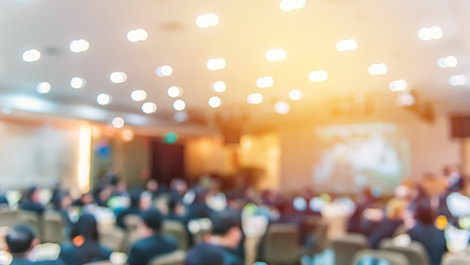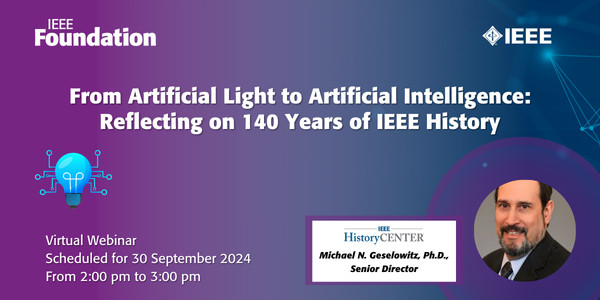Looking to submit your own event? Submit your information via the Events Submission page.
Wireless Power Transmission based on Retro-reflective Beamforming
With the rapid development of Internet of Things, a vast number of small, low-cost, and low-power mobile electronic devices, such as radio frequency identification tags and wireless sensors, will become integral parts of our society in the near future. Supplying electrical power to these devices wirelessly would eliminate/relieve their battery life limitation, and therefore is envisioned to be one of the enabling technologies for the next-generation Internet of Things. Since wireless power delivery must be dedicated to the designated receivers in space, it is inevitable to employ one narrow electromagnetic beam as the carrier of wireless power toward each mobile device. The retro-reflective beamforming technique has excellent potential to accomplish efficient wireless power transmission in the context of Internet of Things, as it is capable of keeping track of multiple mobile devices and then generating wireless power beams to the devices accordingly. The primary merit of retro-reflective beamforming technique is that wireless power transmission is augmented by radar tracking. Specifically, wireless power transmission is initiated by pilot signals broadcasted from wireless power receiver(s); and in response to the pilot signals, a wireless power transmitter delivers directional microwave power beams to the receiver(s). This presentation reviews our past, ongoing, and future research efforts on wireless power transmission based on retro-reflective beamforming. This talk starts with the fundamental principles and a brief history of retro-reflective beamforming technique. Next, the pros and cons of retro-reflective beamforming are analyzed via comparison with other wireless power transmission techniques. Plentiful theoretical and experimental results collected in our research demonstrate that the retro-reflective beamforming scheme enables microwave power beams to follow the location of mobile wireless power receiver(s) dynamically as long as the receiver(s) broadcast pilot signals periodically. The last part of the presentation discusses the challenges pertinent to the practical application of retro-reflective beamforming technique.
From Artificial Light to Artificial Intelligence: 140 Years of IEEE History!
Join the IEEE History Center and the IEEE Foundation on a historical journey, "From Artificial Light to Artificial Intelligence: Reflecting on 140 Years of IEEE History." Let's celebrate together as the History Center launches IEEE History Week in October (link to the page here) and as we commemorate IEEE Day along with the IEEE 140th Anniversary observed all this year! These events mark significant milestones in our history, and we are proud to honor them with a wonderful historical lecture. The keynote speaker, Michael Geselowitz, Ph.D., Sr. Director of the IEEE History Center, will share his unique insights and walk you through the remarkable history from 1884 to the present day, the celebration of 125-anniversary milestones, and the 140th anniversary in 2024. We shall see how IEEE has hit some significant moments throughout its long, vibrant history—through the years and more.
Thomas Edison’s Plan to Illuminate America in the Late Nineteenth Century
Oakton Library 10304 Lynnhaven Pl, Oakton, VA, United StatesIn October 1880, Thomas A. Edison published “The Success of the Electric Light,” in The North American Review,” to explain that the adoption of his electric light for domestic use has been delayed “due to the enormous mass of details which have to be mastered before the system can go into operation on a large scale, and on a commercial basis as a rival of the existing system of lighting by gas.” The “enormous mass of details” would include further research and development to improve the lamp, founding companies to manufacture components, and personally funding and supervising a company to build power plants. This talk will focus on the Thomas A. Edison Central Station Construction Department, a little-known entity founded by Edison himself in May 1883, to construct direct-current electric power stations in towns and cities throughout the United States. It built thirteen central stations in Massachusetts, New York, Ohio, and Pennsylvania before being absorbed by the Edison Company for Isolated Lighting in October 1884, coincidently, around the time IEEE was founded. While Edison stepped away from the day-to-day central station business, he continued research in direct current and later alternating current technology. And by the late 1880s, he found himself dragged into a media war with George Westinghouse in what has become the mythical “battle of the currents.” In 1887, Edison opened a new and expanded research laboratory in West Orange, New Jersey and by 1890 his research and business interests moved on to the improved phonograph, the talking doll, motion pictures, ore milling, and other technologies.
Engaging Students in STEM with Historical Narratives
We invite you to attend a free webinar, Engaging Students in STEM through Historical Narratives: The Example of Drones, on October 15th from 4pm to 5pm ET. Drones have been in the news lately, from use in damage surveillance in the devastating hurricanes to cleaning garbage off Mount Everest. In this webinar we will focus on the IEEE REACH UAV (unmanned aerial vehicle or "drones") Inquiry Unit, which explains how drones had their origins in the military but have applications across society, and encourages students to use knowledge of the past and present to speculate on the future. By immersing students in the historical narrative, REACH encourages students to think critically about technology and examine its relationship to society, culture, economics, and politics. Like the other nine free REACH units, UAV (drones) includes an inquiry designed lesson plan, teacher background information, primary and secondary sources, engaging student videos, and a hands-on activity. Participants in the webinar will walk away with ideas and resources you can use immediately in the classroom, and will have an opportunity to ask questions of historian Dr. Michael Geselowitz, Senior Director of the IEEE History Center. Register for the webinar.
Unlocking Potential: How Key Partnerships Fuel Technological Innovation
During this session, learn about TryEngineering’s partnerships with other IEEE programs and external organizations. View webinar recording.


